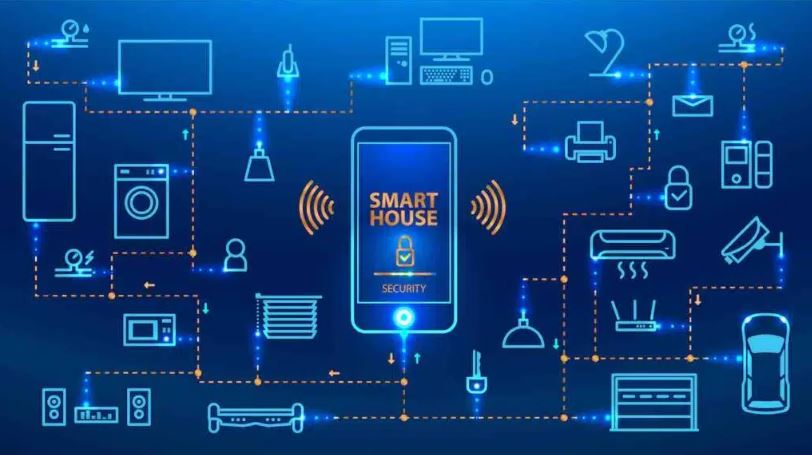This post may contain affiliate links, which means I may receive a commission from purchases made through these links. The reputation of Nexa is important; that’s why I will only recommend products I have personally reviewed or tested.
Interconnectedness: The Melody of the Smart Home
In the realm of your ever-evolving, smart-embedded homestead, a symphony of exchanges ensues, with your devices taking on the role of a virtuoso ensemble. In moments of seamless orchestration, they communicate, they sync, they collaborate. Their concert hall? A centralized command unit, often nestled within the palm of your hand – your smartphone.
Protocols: The Unseen Conductors
Every symphony, however, requires a well-versed conductor, and for our digital virtuosos, this conductor manifests as protocols. These unsung heroes, dwelling in the very framework of your smart devices, unlock the automation of tasks previously mundane, transforming the locking of doors or closing of blinds into a futuristic performance. Yet, what does this orchestration entail? Allow us to pull back the curtain on this digital symphony.
Decoding the Language of Smart Devices
Much akin to the human tongues of yore and present, a smart home protocol serves as a dialect, a lingua franca for your smart devices. Within its confines, they confide, exchange information, and execute each other’s functions with precision. A network tethering your devices to the central hub or controlling unit forms the lifeline for this discourse, enabled by the protocols in use today.
The Ensemble: Z-Wave, Z-Wave Long Range, ZigBee, Wi-Fi, Bluetooth Low Energy, and Thread
Today, we have a variety of protocols lending their services to our smart homes. Five have emerged as frontrunners – Z-Wave, Z-Wave Long Range, ZigBee, Wi-Fi, Bluetooth Low Energy, and Thread. Shall we dive into their intricate workings?
Z-Wave: The Stalwart Maestro
Z-Wave, the virtuoso of open standard wireless communications, is a favored choice among home automation enthusiasts. Its melody? Mesh networking, an arrangement facilitating the relay of messages between devices. With the low-frequency 908.42 MHz (in the United States) as its preferred note, it evades interference with Wi-Fi and penetrates walls with surprising ease.
Z-Wave Long Range: The Sprightly Protégé
Enter Z-Wave Long Range (Z-Wave LR), a sprightly protégé of Z-Wave. With a focus on scalability, battery longevity, range, and coverage, it has carved a niche for itself. Much like its mentor, Z-Wave LR espouses interoperability and compatibility. It, however, differs by opting for a star network topology instead of a mesh, extending its reach to an impressive mile, and supporting an enormous orchestra of up to 4,000 devices.
ZigBee: The IoT Maestro
The ZigBee protocol is a maestro in its right. A brainchild of the Internet of Things (IoT) ethos, it’s an open standard, wireless mesh network that provides for the requirements of low-power, low-cost wireless networks. Handling data rates up to 250 kbps and operating in the 2.4 GHz frequency, ZigBee takes pride in its capacity to manage an impressive 65,000 devices per network. With AES-128 encryption, it ensures a secure transmission, ideal for comprehensive smart home systems.
Wi-Fi: The Familiar Conductor
Our next maestro, Wi-Fi, is a familiar face, having been a resident of our homes for a while. Devices under its baton, like smart TVs and refrigerators, connect to the internet via your home router, much like your smartphones and computers. Operating in both 2.4GHz and 5 GHz bands, it boasts of extensive coverage, with indoor reach of up to 150 feet and an outdoor range of up to 300 feet.
Bluetooth Low Energy: The Low-Power Maestro
Bluetooth Low Energy (BLE) – a low-power iteration of traditional Bluetooth – joins our ranks of conductors. The protocol supports mesh networking, ensuring data security through AES-128 encryption. Its portfolio includes IoT devices from home appliances to smart grid meters and asset trackers. Operating in the 2.4GHz ISM band, it facilitates data transmission over short distances, typically less than 100 meters.
Thread: The Rising Star
Thread, an open standard, IPv6-based, low-power, mesh networking protocol, concludes our ensemble. With a consortium of heavyweights such as Google Nest, Samsung, and ARM Holdings behind it, Thread is a rising star. Operating on the 2.4 GHz frequency, it securely connects over 250 devices while conserving energy.
Navigating the Symphony of Protocols
Setting up a smart home may seem like a daunting task with these multiple protocols. However, hubs can help your devices navigate these protocols. Remember to conduct thorough research and scrutinize device interoperability, with a keen eye on the protocols they support. The power of a truly smart home lies in its perfect orchestration.


